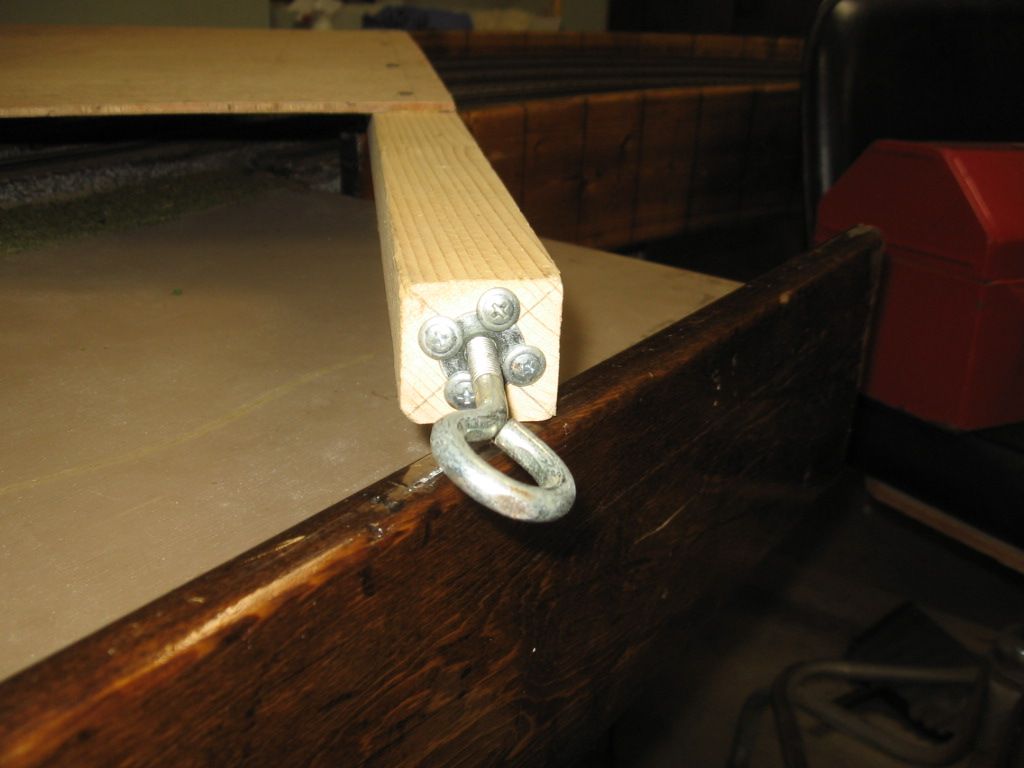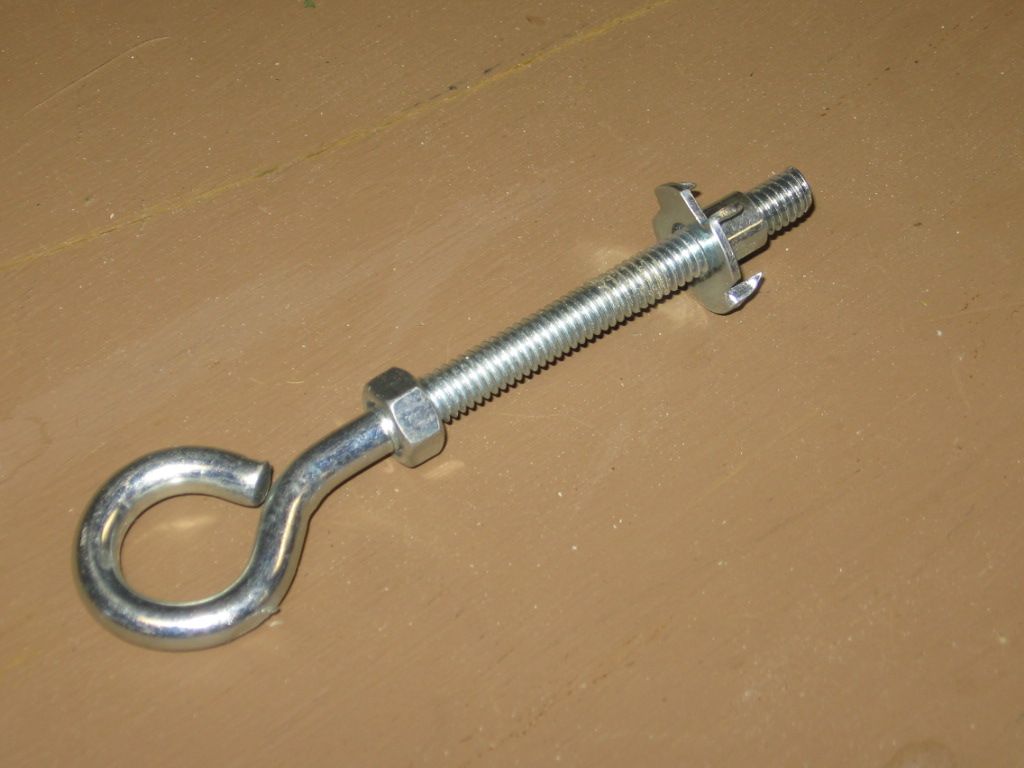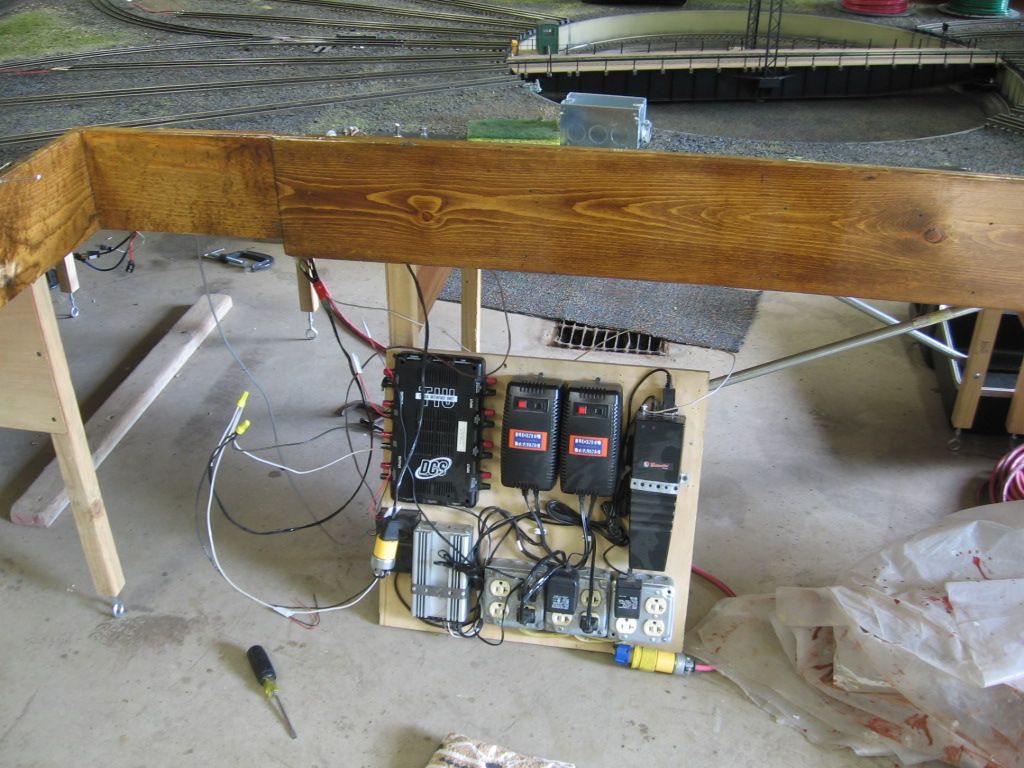For legs, look at the Pittsburgh HiRailers. They often post on this Forum. Their leg system beats wingnutting individual legs hands down! BTDT!
Chris
LVHR
Chris, thanks for the compliment! Here are some photos showing how our leg system works:

To the right you can see the floating board clamp with the bolt-spring-wingnut configuration. Here is a close-up:

The legs are just inserted between the structural board on the right, and the floating board on the left and the wingnuts used to tighten until the legs are clamped firmly in place. Then at tear-down, the spring will push the board away as the wingnuts are loosened, releasing the legs. It is a very quick and efficient system. Each set of our legs consist of 2x2's spaced apart and held together by a piece of luan plywood with eye bolts installed in the bottom to allow us to level the layout (sometimes shims are still necessary on very uneven surfaces -- when our Kennywood setups were in the cafeteria building, we needed several inches of shims to deal with the floor slope -- it is a 100+ year old building).
From the first photo, you can also see that we use regular household outlets in conjunction with 2-prong polarized plugs for our track power. You have to be careful with this type of system, but this type of plug is made for constant plugging and unplugging, and in a pinch, we can go to any good hardware store for replacements. We also have a 120v line on the back of our modules for accessories or other power needs. Again, care must be exercised when using this kind of system.
While I'm at it, here is a shot of our control setup:

It is not as neat as it normally is, as we experienced a failure of the power strip mounted in the box. The circuit tester (the little yellow one plugged into the box on the floor) helped diagnose the problem quickly, and is a must-have if you intend to use TMCC/Legacy as we have, in the past, encountered extension equipment that was defective or wired incorrectly and did not have a good ground. Also, we love the ZW-L (seen mounted on the lower section of its own carrying case which is sitting on the lid) as once it is on, we don't have to touch it again until it is time to turn it off. Before the ZW-L came along, we used two Z-4000's so that when we had a minor derailment that tripped the breaker, we only had to check two trains, rather than all four.
Andy












